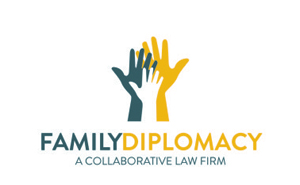Who Started Collaborative Divorce?
Ever since my first basic collaborative divorce training in Tampa in 2011, I have been enthusiastically offering the collaborative process to my clients as a better way to handle family law matters. I have also tried to become a student of the process, reading every book I can get my hands on that discusses collaborative divorce.
Right now I am reading The Collaborative Way to Divorce: The Revolutionary Method That Results in Less Stress, Lower Costs, and Happier Kids – Without Going to Court. This book is written by Stu Webb, the founder of collaborative divorce, along with Ron Ousky, one of the early leaders of collaborative practitioners.
In the introduction of the book, Stu discusses how he came up with the collaborative method:
In 1989, I had been a divorce lawyer for about eighteen years – and was getting pretty sick of it. I saw what the adversarial court battles that were the focus of divorce were doing to my clients, and I knew the resulting negativity was having an effect on me, too.
In traditional litigation two lawyers (or teams of lawyers) hash out the divorce in a court of law. The actual parties to the divorce – the husband and wife – have almost no direct contact with each other, and what little interaction they have is usually bitter and unproductive. Tension, fear, anger, and recrimination prevail. This traditional process makes it almost impossible for the parties to have anything remotely resembling a healthy relationship after the divorce, even when there are children involved.
As a divorce litigator, I’d felt for a long time that I was living in a siege mentality, merely waiting for the next battle to start, and finally got to the point where I was ready to quit the practice of law. I enrolled in a college and was ready to start educating myself for a new career when I had one last thought about practicing law:
“If I’m actually willing to quit being a lawyer, why don’t I at least see whether there’s some out-of-the-box way I can look at things? Maybe there’s a better way of handling divorce.”
So I began experimenting with different ways to approach family law practice. In late 1989, I was involved in one of the worst litigation cases of my career, a real showcase of everything that’s wrong with litigation (lying, nasty tricks, hiding assets, endless court hearings, and so on). That case in and of itself could have been enough to get me to retire. But in the midst of one of those awful hearings, it occurred to me that there should be settlement-only specialists available for divorcing couples, specialists who work with the couple outside the court system, and who would turn the case over to trial lawyers if and only if the settlement process failed.
That, in a nutshell, was the birth of Collaborative Law.
It is with this same idea, that the courtroom is rarely an appropriate forum to decide personal, private matters such as child custody, that has helped me build my collaborative divorce practice in Tampa Bay.
If you have questions about how the collaborative process can help dissolve your marriage without destroying your family, schedule a consultation with The Law Firm of Adam B. Cordover, P.A., at (813) 443-0615 or fill out our contact form.
Adam B. Cordover is currently president of Next Generation Divorce, a network of nearly 100 caring professionals helping families resolve disputes privately and respectfully in Hillsborough, Pinellas, Pasco, Manatee, and Sarasota counties.



Leave a Reply
Want to join the discussion?Feel free to contribute!